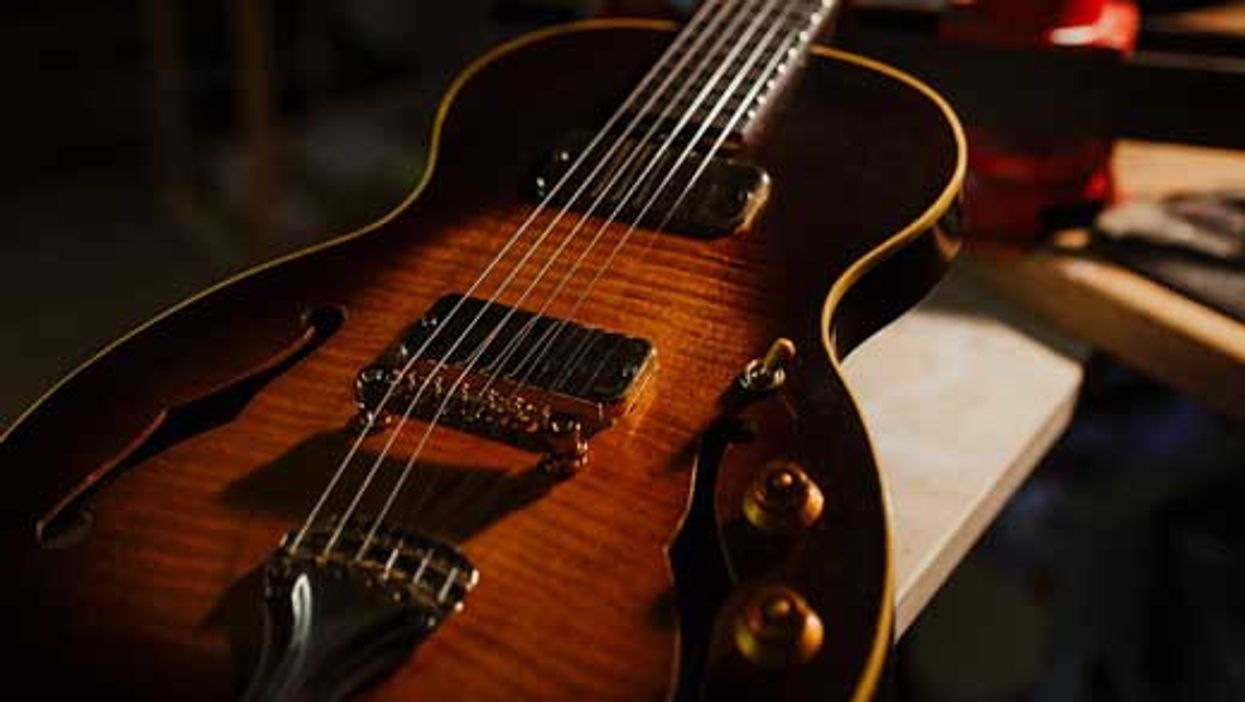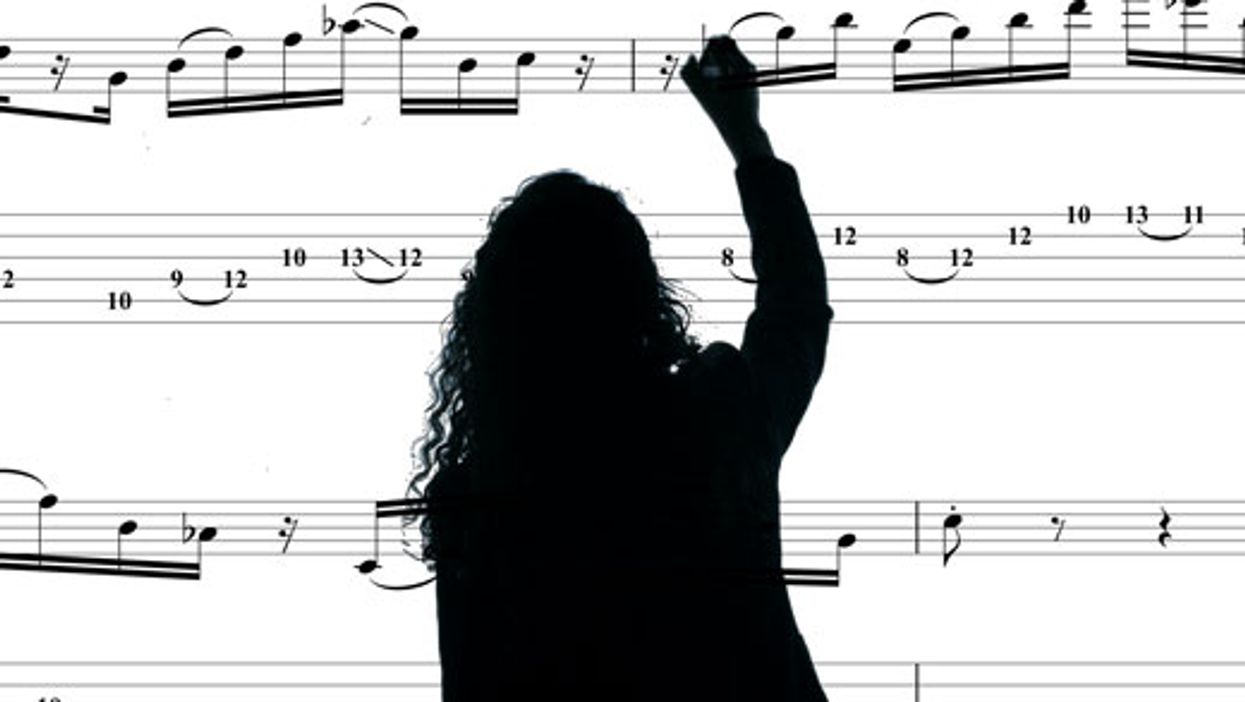Theory: Beginner
Lesson Overview:
• Gain a fresh approach to the pentatonic scale in different positions.
• Learn how to create “fluttering" licks within the pentatonic scale.
• Add a tasty new element to your soloing. Click here to download a printable PDF of this lesson's notation.
Blues players ranging from B.B. King, Albert King, and Albert Collins to J.D. Simo, Robben Ford, and John Scofield all have seemingly untouchable elements to their playing that make them masters of the guitar. The good news? Some of those seemingly untouchable elements are totally learnable and customizable! A concept I picked up from listening to these legends opened my eyes to one thing they had in their playing that I did not. The idea is a simple way to spice up your blues playing yet is underutilized at most jam sessions and in most 12-bar solos. So… what is it?
Half-step bends within the pentatonic scale.
I'm sure you're thinking, “Well of course. B.B. King, Stevie Ray Vaughan, and countless others have been using that idea for decades." While true, they mostly used this concept in a different way—by building those massive slow bends one half-step at a time. We're going to take that a step further, no pun intended.
In Ex. 1, I start with the concept in its simplest form. By working out of the E minor pentatonic scale (E–G–A–B–D), I ascend by playing the 5, b7, and root notes. Immediately after playing the root, I fret the 7 and bend back up to the tonic with vibrato. The key to making this sound intentional is to not linger on the D# . Although this is only a basic demonstration of the concept, I enjoy the slide-esque feel and tonality this lick provides.
Click here for Ex. 1
In Ex. 2, I expand on the same idea with a longer lick, but out of a different position of the E minor pentatonic scale this time. You'll notice that the second bend is actually outside of the pentatonic box, and I release that bend before finishing the lick. Using your first and third fingers, it isn't much of a stretch.
Click here for Ex. 2
Now that you've got the basic concept under your fingers, it's time to add a simple pull-off. In Ex. 3, this idea is placed at the peak of the ascending section on the lick. After fretting the 6 with my third finger, I fret the b6 with my second finger and bend right back up into the 6. Once I hit the target note, I release the bend and pull-off from the b6 to the 5. The rest of the lick is fairly simple, still working within the E minor pentatonic scale. By using a half-step bend followed by a pull-off, this lick has a brief moment of tension and a general sense of “slipperiness" before being resolved.
Click here for Ex. 3
One more embellishment of this concept worth adding to your vocabulary is to slide into the target note after a half-step bend, slide downward one half-step, and finish with a pull-off as shown in Ex. 4. This lick can be tricky to execute with speed at first, so I encourage you to take it slow and focus on the clarity of each note within the lick.
Click here for Ex. 4
Once you get the hang of it, try tackling the next trio of licks. When you're comfortable with these examples, you've really got the concept under your fingers and you can use them to add “flutter" and “wow" to your soloing.
Ex. 5 combines major and minor pentatonics and might take a while to feel natural. It's a bit of a stretch, so be sure to use your fourth finger in the middle of the triplets—this will help with transitioning between the three sections of the lick.
Click here for Ex. 5
In Ex. 6, I work the concept into a classic blues lick to create a different feel and sound from what you would normally hear.
Click here for Ex. 6
I'm still working in the key of E, but just for fun I target the V chord (B7) in Ex. 7. This willhopefully spark creativity when applying this concept. Plus, it's great for setting up a turnaround!
Click here for Ex. 7
Implementing this concept of half-step bends can add several new and interesting sounds to your repertoire. Don't be surprised when your guitar playing peers ask, “What was that?!?" As with any newly learned concept, it's easy to overuse once it's comfortable. The goal of learning this idea is to add flavor to your blues playing, keeping in mind that it isn't meat and potatoes—it's a marinade.








![Rig Rundown: AFI [2025]](https://www.premierguitar.com/media-library/youtube.jpg?id=62064741&width=1245&height=700&quality=70&coordinates=0%2C0%2C0%2C0)


![Devon Eisenbarger [Katy Perry] Rig Rundown](https://www.premierguitar.com/media-library/youtube.jpg?id=61774583&width=1245&height=700&quality=70&coordinates=0%2C0%2C0%2C0)





